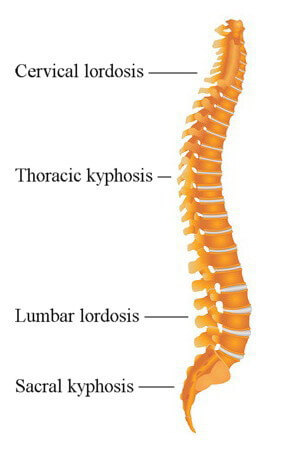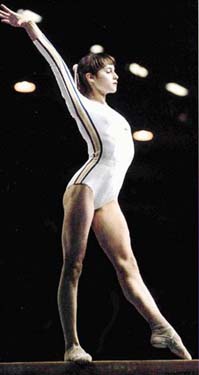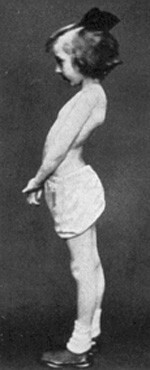How the Action Response Leads to Back Pain
How and Why We Develop the Natural Curves in Our Spine
In the first few months of life we are entirely helpless, unable to crawl or even sit up by ourselves. We have spent nine months curled up in the fetal position and have yet to gain control of the extensor muscles of our neck and back, which allow us to lift up our head and arch our lower back.
Around three months of age, we finally succeed in lifting our head off the ground when lying on our stomach. A few months later, the muscles in our lower back are activated, allowing us to crawl, sit up, and eventually stand and walk.
Once we are using the extensor muscles of our back and neck on a regular basis, the cervical and lumbar curves in our spine will begin to develop. These are called lordotic curves, and they curve in the opposite direction as the kyphotic curves of the thoracic and sacral portions of the spine.
The natural kyphotic and lordotic curves of the spine are essential to our spine’s ability to absorb shock; they allow the spine to function like a big spring. If we didn’t have these curves, our vertebrae would be stacked on top of each other in a straight line, and compressive forces would cause a great deal of damage and pain.

The Action Response
In infants, the contraction of the back and neck muscles in response to the instinctive desire to become mobile is called the Landau Reflex. But even after we learn how to stand, walk and run, our extensor muscles automatically contract every time we want to get up and go; this is the action response. We arch our back, lift our head, pull our shoulders back, stick out our chests, straighten our knees, and rotate our legs outward.
Our action response is also triggered by eustress, or positive stress, such as giving a presentation or meeting our new boss. Whenever we want to make a good impression and be on our game, we instinctively contract our back muscles so that we stand up straight, look taller, and appear to be confident. This posture prepares us both physically and psychologically for action.

We subconsciously associate this upright, often arched posture with confidence, strength, youth and beauty. It is no coincidence that the military trains soldiers to stand up straight and stick out their chests. The action response posture shows the enemy that they are ready for a fight. And we find it much more pleasing to look at someone who stands erect rather than rounded over; imagine watching a dancer or ice skater who was slouching as they performed.
The Negative Effects of the Action Response
So far, the action response sounds pretty great. It prepares us for action and automatically makes us look and feel more confident.
When our action response is triggered once in a while, it is great. But when it’s activated constantly by a high-stress job or practiced repetitively as part of physical training, the pattern of muscular contraction becomes learned. So even after you retire from your stressful job or quit dancing, your back muscles remain habitually tight, causing soreness, pain, and often structural damage to intervertebral discs.
Once the action response has become habitual, and we are subconsciously holding our lower back muscles tight all the time, pain becomes pretty much inevitable. When the extensor muscles of the back are chronically contracted, they will typically pull the lumbar spine into hyperlordosis. The exaggerated arching of the lower back compresses the discs in between the lumbar vertebrae, often causing the discs to bulge or herniate. People with tight lower back muscles often experience sciatica due to compression of the sciatic nerve as it exits the spine in between the lumbar vertebrae. Tight lower back muscles also compress the sacroiliac joint, causing pain and inflammation, and potentially shifting the joint out of alignment.

Reversing the Effects of the Action Response
The negative effects of the action response can be prevented, alleviated, and often eliminated by re-educating the nervous system to release the chronic muscular contraction in the back muscles. In order to re-educate the nervous system, we must go through an active learning process involving slow, conscious movement.
The most effective way to teach the nervous system to release chronic muscular contraction is with the movement technique of pandiculation. Pandiculation sends accurate biofeedback to the nervous system, resetting the gamma feedback loop, which controls the resting level of tension in our muscles. Thomas Hanna developed the technique of pandiculation and incorporated into his system of neuromuscular education called Clinical Somatic Education.
Check out these other posts about reflexes, stress and posture:
Recommended reading:
The Pain Relief Secret: How to Retrain Your Nervous System, Heal Your Body, and Overcome Chronic Pain by Sarah Warren, CSE
Somatics: Reawakening the Mind’s Control of Movement, Flexibility and Health by Thomas Hanna

